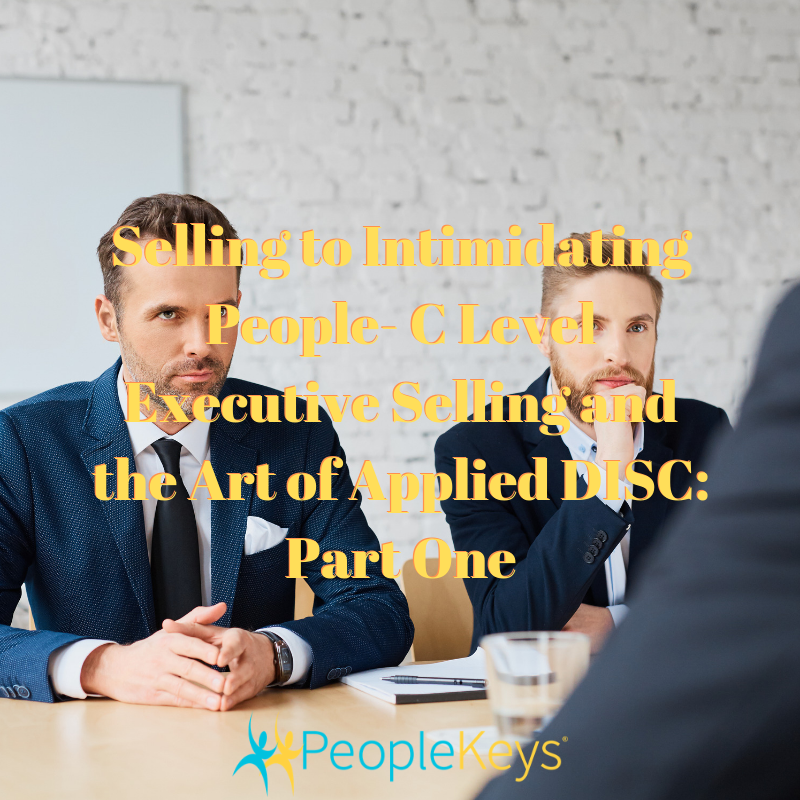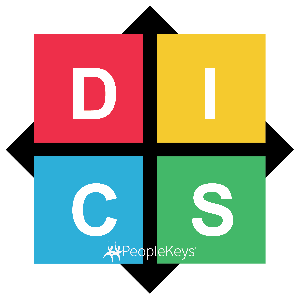
Selling to Intimidating People - Executive Sales and DISC: Part One
Dr. Bradley Smith of PeopleKeys shares advice from his years of experience working with and selling to C level executives.
C level executives can be intimidating. C stands for Chief, and these people are the company’s decision makers; it’s movers and shakers. They’re the ones in charge. They have the authority and desire to give a quick thumbs up or down to an idea or product, and they can determine and change the trajectory of their business in a moment’s notice. It’s been said that you only have one chance to make a first impression, and with the C level executive, they are going to be assessing their interest in what you are selling and the merits of your product, all within this initial interaction. They don’t need to go to committees or look at budgets, etc. to gain approval. They decide. And they are BUSY. Don’t waste their time.
The C-suite must believe you are a time saver, not a time waster. This can make this group of people feel particularly inaccessible and intimidating. But ultimately, speaking in front of 5000 vs. 50? It’s the same thing.
Dr. Smith has condensed his years of experience selling to this group into 13 main ideas, the first of which you can read below. To sell to a C level executive, you must focus on what Dr. Smith calls “The ABCs of Selling to C Level Executives.”
Adjustability & Calling Cards – Who do they see you as? How are you presenting yourself? How do they see themselves? How would they like to see themselves? Do they seem like they want to be perceived as effective, cutthroat, and intimidating? Acknowledge that you know they are busy and they have important things to do, so you won’t waste their time. Do they seem as though they would like to appear approachable to their employees? Include a piece about how your product will affect the whole team positively. Cater your pitch to your audience. Sometimes you can infer certain things about their self perception and their needs in advance. See if an internet search will tell you something about them or the philosophy or mission statement of their company. Then you can cater your pitch toward their company’s mission. Present a different facet of yourself and your business/product depending on the circumstances. Use your calling card to your advantage. Some people have multiple business cards. Your calling card is not just about a physical card, it is about how you present yourself and their perception of what and who you are.
Brevity - What is your 1 minute elevator pitch? If you don’t have one, then don’t waste your time or theirs. How would you describe what you sell to someone you just met in less than one minute? Eliminate filler words and focus on strong persuasive adjectives. “It is efficient, effective, and affordable.” Use persuasive, but succinct, descriptions of the benefits of your product. This is a commercial for you and your product, not an infomercial or a report. Be brief, confident, and well prepared. Many of these people have personalities that focus on the bottom line and the big picture. You need to, too. Don’t focus on the details, but be prepared to back up your statements with facts or examples.
Confidence - You must exude confidence. Confidence equals passion plus knowledge. Believe in what you sell, believe in what it will do for them. What makes your product unique? Why are you proud to sell this product? Believe that you can help them, and they will pick up on that sincerity, knowledge, credibility, and confidence.
Discussion & Dominant Styles – You better know the C level’s personality style. C level employees are more likely to have a Dominant or D style personality as their primary or secondary trait. Speak the D style language. Ds communicate by being direct, succinct, and efficient. They focus on the bottom line, and don’t like it when a person dwells on issues and problems, but would rather they focus on solutions. They don’t want to know why something doesn’t work and here’s all of the reasons, but rather what will work and one sentence as to why. They are not interested in being bogged down by details, and they are not swayed by emotion based rationales. Their top concern is the bottom line. When you are communicating with the C level employee, speak in the D style language, not yours. A C style person trying to sell something to a D style C Level employee would try to pitch their product by listing all of the evidence, parameters, and details to explain this product. They will assume that the evidence will speak for itself, and that sufficient data is all a person needs to make a decision. D style’s decide with their guts, and will be irritated by a litany of details and evidence. Speak to them in their language, and you will get farther.
Exigency or Circumstances – It’s all about them and their company’s needs. What are the circumstances they are facing? What is the pain or pleasure that gets their attention? People tend to move away from pain, and move toward pleasure. To help them, address the immediate needs of the company and their specific circumstances. How can your product/service help? Label the pain they are trying to move away from, and offer solutions.







